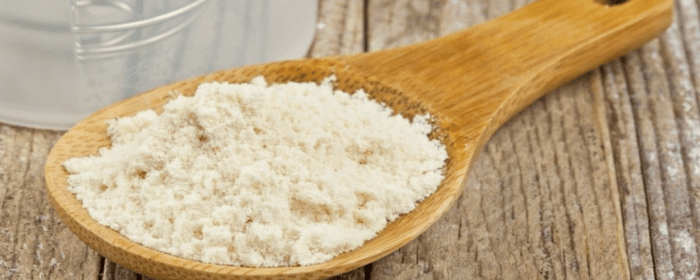
by admin | Mar 23, 2019 | Hyperbaric Oxygen Therapy, Parkinson's Disease, Stem Cell Therapy, Studies
Parkinson’s disease is widely known as a neurological condition that causes motor symptoms. Typically, patients with Parkinson’s disease have pill-rolling tremor, cogwheel rigidity, and a shuffling gait. However, about half of all patients with Parkinson’s disease also have psychiatric symptoms such as anxiety and depression. It can be challenging for patients and caregivers to deal with Parkinson’s disease, but if anxiety and depression are also present, it can make matters worse. When psychiatric symptoms occur, they can make Parkinson’s disease more difficult to treat, increase the burden on caregivers, and greatly reduce quality-of-life for patients.
One of the things that make psychiatric symptoms so difficult to treat in patients with Parkinson’s disease is that doctors have limited treatment options. The antidepressants that they would normally use to treat depression and anxiety can make motor symptoms of Parkinson’s disease worse. People with Parkinson’s disease often struggle with sleep disturbances, and typical antidepressants can make sleep problems worse, too. Not surprisingly, many patients with Parkinson’s disease suffer from depression and anxiety and never find adequate treatment.
Physicians recently reported their experience with a patient with Parkinson’s disease who they treated with hyperbaric oxygen. The man had struggled with Parkinson’s disease for 1.5 years and had slipped into a severe depression. He had lost interest in pleasurable activities, was only sleeping about 2 to 3 hours each night, unintentionally lost over 40 pounds, and was having thoughts of suicide. He also had significant anxiety issues that made his life very difficult. Regular drug and psychotherapy treatments for anxiety and depression did not work for this man, so physicians were left with few options.
The man with Parkinson’s disease, severe depression, and anxiety underwent 30 days of hyperbaric oxygen treatments. He inhaled pure oxygen in a hyperbaric chamber for 40 minutes per session at 2 atm of pressure. In as little as four days of hyperbaric oxygen treatment, the man was sleeping better and longer than he did before treatment. His mood has also improved.
After 30 days of hyperbaric oxygen treatments, the man was able to sleep for 8 to 10 hours a night. Not only did his psychiatric symptoms improve, but his Parkinson’s disease symptoms also improved. While he still had Parkinson’s disease symptoms after hyperbaric oxygen treatment, the symptoms had improved substantially.
When physicians followed up one month after treatment had ended, the patient was still sleeping through the night, his mood was good, and he did not need assistance with his activities of daily living.
It is important to remember that this is a case study, the results of a single patient. Nevertheless, the improvements in both Parkinson’s disease and severe symptoms of anxiety and depression are incredibly impressive. For this man, at least, hyperbaric oxygen therapy had a substantial positive effect in his life where other treatments had failed.
Patients can also combine Hyperbaric Oxygen Therapy with Regenerative Medicine. Regenerative Medicine is an alternative option to help manage the symptoms of Parkinson’s Disease. The stem cells have the potential to replicate and repair numerous cells of the body, including those damaged by Parkinson’s. These advancements in the treatment of Parkinson’s Disease work to fully regenerate missing or damaged tissue that the body would not ordinarily regrow.
Call your dedicated Care Coordinator at 800-531-0831 for more information.
Reference: Xu, Jin-Jin et al. (2018). Hyperbaric oxygen treatment for Parkinson’s disease with severe depression and anxiety. Medicine. 2018 Mar; 97(9): e0029.

by admin | Dec 14, 2018 | Parkinson's Disease, Stem Cell Research, Studies
Parkinson’s disease is a progressive neurodegenerative disorder that causes tremor,rigidity, changes in facial expression, and several other symptoms. Whilesufferers usually retain their full cognitive abilities and memory, they tendto be impacted in mood and some mental health conditions that emerge as part ofthe condition process.
Parkinson’s disease is caused by loss of brain cells in a specific region of the brain called the substantia nigra. The neurons in this area of the brain contain dopamine, and as those nerve cells die, the levels of dopamine in the brain decrease. Consequently, patients with Parkinson’s disease often take medications that improve or accentuate dopamine signaling in the brain. These drugs can be effective for a certain period of time, but eventually, the condition will overcome the ability of these drugs to improve dopamine signaling. There is no cure for Parkinson’s disease, but researchers hope stem cells may be the answer.
Since dopamine drugs have worked reasonably well to control the symptoms of Parkinson’s disease, researchers assumed that replacing dopamine cells in the brain would help treat Parkinson’s disease. In a way, it did. When people with Parkinson’s disease received transplants of stem cells intended to produce dopamine, some of them experienced dramatic improvements in motor function. However, patients still had several other symptoms of Parkinson’s disease such as fatigue, bowel problems, sexual problems, and mood disorders. Neuroscience researchers realized Parkinson’s is not just about a loss of dopamine. It turns out, that while stem cells can help restore dopamine in people with Parkinson’s disease, they also coulduse help with serotoninneuron regenerating.
As a result of this groundbreaking work, researchers are now planning and implementing experiments in which Parkinson’s disease patients will receive stem cell transplants containing both dopamine cells and seroton in cells. If effective, we will be one step closer to a new and powerful treatment for Parkinson’s disease.
Reference: https://blogs.scientificamerican.com/scicurious-brain/parkinsons-is-much-more-than-dopamine/?WT.mc_id=send-to-friend

by admin | Jul 27, 2018 | Health Awareness, Lupus, Multiple Sclerosis, Parkinson's Disease, Studies
Colostrum is the milk produced by the mammary glands during pregnancy prior to giving birth. It is rich in antibodies that help prevent the newborn from various conditions. Colostrum as compared to normal milk contains a high amount of nutrients and fat, making it highly beneficial.
The most important thing to know about colostrum is that it is not a medication. It is a naturally designed food that maintains the health and prevents conditions. Colostrum is effective for shutting down the onset of conditions and infections, which helps the body to repair itself and allows the individual to enjoy a healthy and radiant life.
Colostrum is the Key to Gut Health
Colostrum is the source of everything that is required to maintain a healthy gastrointestinal tract. It is known that most of our conditions take birth in the gut and proper absorption of nutrients is the key to great health. It is one of the primary function of colostrum to maintain a healthy gut, which is the basis of the overall healthy body.
When the beneficial bacteria present in our intestine is outnumbered by the harmful bacteria then our gut is said to be out of balance. This imbalance has many consequences, one of which is the leaky gut syndrome.
Leaky gut syndrome is a condition due to which various pathogens and toxins pass through the lining of the gut and move freely in the body, this leads to various conditions. Leaky gut syndrome, if not treated can be a life-threatening condition.
Colostrum is an optimal treatment for treating leaky gut syndrome because it has growth factors that help repair the damage of the intestine to normal. It is also rich in immunoglobulins that control the pestering of fungi and bacteria in the body. In various conducted studies colostrum has successfully increased the surface area of the lining of the intestine, thereby improving the absorption of nutrients.
Colostrum: The Perfect & Functional Food
Looking at all the immune and growth factors that are present in colostrum, it is called the best alternative to pharmaceutical drugs, from steroids and antibiotics. Colostrum is also safe for people suffering from lactose intolerance and has no allergic reactions or side effects.
A functional food is one that has potential health benefits compared to normal food and is high in nutrients. Colostrum is high in nutrients and can be combined with other food products. It is most effective when taken on an empty stomach. Available in the form of capsules, colostrum is more effective and bioavailable.
Colostrum for Autoimmune Conditions:
Autoimmune conditions are those in which the body starts producing antibodies against itself. Colostrum has shown to be highly effective to treat autoimmune conditions like Lupus, Parkinson’s disease, and Multiple Sclerosis. Chemokine receptors have been observed to be the cause of the development of all these conditions. Colostrum produces antagonists of these receptors and has been shown to decrease the symptoms of many common autoimmune conditions.
Colostrum Used as a Topical Application:
Colostrum, if applied externally can help heal the burns, acne, cuts and various abrasions and even surgical cuts. If applied orally, it can help deal with sensitive teeth relieve canker sores and gingivitis.
Some Overall Benefits of Colostrum are:
Anti-inflammatory
Anti-aging
Anti-fungal
Anti-bacterial
Cancer
AuAutoimmuneondition
Blood pressure
Cholesterol
Sugar levels
Diabetes
Digestion
Flu prevention
Fat reduction
Heart health
Gut health
Immunity
Joint repair
Immunity
Mobility
Muscle repair
Pain
Stamina
Tissue repair
Wound healing
Weight loss
Inflammation
Below is a list of some common conditions for which colostrum can be effective:
Allergies
Anemia
Arthritis
Autoimmune conditions
Asthma
Bacterial infection
Bone marrow transplant
Cancer
Alcoholism
Allergies
Anemia
Arthritis
Crohn’s disease
Chronic fatigue
Diarrhea
Fibromyalgia
Food poisoning
Heart disease
Hepatitis
Influenza
Intestinal bowel syndrome
Joint repair
Leaky gut
Lupus
Multiple sclerosis
Osteoporosis
Obesity
Premature birth
Osteoporosis
Ulcer
Yeast infection
Viral infection
Where Can I Find Colostrum?
If you have any symptoms suggestive of gastro-intestinal dysbiosis (diarrhea, constipation, bloating, reflux, stomach discomfort or pain) then you should seek further work-up by your physician or a Functional Medicine Doctor.
In the meantime, it is recommended to start using Bovine Colostrum which can be found at Sovereign Laboratories at www.mysovlabs.com. Simply mix 2 tablespoons in 6oz of water and consume twice per day on an empty stomach. This product is full of gut healing immunoglobulins. Use for 2-3 months should result in significant improvement.
In addition, it is also recommended to take a good probiotic while using your bovine colostrum. Vitamin D levels should be optimized to levels between 80-100.

by admin | Jul 24, 2018 | Health Awareness, Multiple Sclerosis, Parkinson's Disease, Rheumatoid Arthritis, Stem Cell Therapy
In a recent edition of JAMA, the results of a 30-year study examining the possible connection between stress and autoimmune disease were revealed. The findings don’t simply demonstrate a link; instead, they reveal that stress-related disorders are significantly associated with risks of developing the subsequent autoimmune disease. In the study of over 100,000 subjects, the correlation showed that individuals with a diagnosed stress-related disorder were 30-40% more likely to later be diagnosed with one of many possible autoimmune diseases.
What is a Stress-Related Disorder?
The type of stress study subjects encountered is not to be confused with the stressors we encounter during everyday life. Sitting in traffic or worrying about being late for a meeting, for example, are examples of acute stress. These forms of short-term stress generally come and go but fail to create the sort of long-term damage produced by chronic stress, or stress-related disorders.
Stress-related disorders are mental health conditions resulting from short- and long-term anxiety from mental, physical, or emotional stress. Examples of these include post-traumatic stress disorder (PTSD), obsessive-compulsive disorder, acute stress reaction, and adjustment disorder.
Which Types of Autoimmune Disorders Are Linked to Stress?
According to the study’s findings, individuals with stress-related disorders were more inclined to be diagnosed with one of 41 autoimmune disorders. Among the many autoimmune diseases observed by the research were psoriasis, Crohn’s disease, rheumatoid arthritis, and celiac disease.
Interestingly, additional variables seemed to further increase – or decrease – one’s risks of developing an autoimmune disease. Being diagnosed with PTSD at a young age, for instance, increased risks, while receiving antidepressant treatment shortly after being diagnosed with PTSD lowered rates of subsequent autoimmune disease diagnosis. Thus, it could be inferred that receiving treatment for a stress-related disorder may help to treat not only the stress itself but also minimize the lasting implications caused by it, including increased risks of disease.
What Causes the Connection?
Further research must still be conducted to pinpoint the precise long-term effects stress has on the body, and more specifically, on the immune system. Experts speculate that factors such as changes in cortisol levels and pro-inflammatory cytokine levels may need to be examined. Another hypothesis set forth by researchers is that individuals living with conditions such as PTSD might be more inclined towards unhealthy behaviors such as drinking more alcohol or sleeping less.
Although further research into this connection has yet to be conducted, one important takeaway from the findings is the fact that seeking treatment for stress-related disorders should now be considered more critical than ever. By consulting mental health professionals, individuals living with these conditions can pursue a tailored treatment approach to support short- and long-term improvements in overall wellness. For those with an auto-immune condition, see how stem cell therapy may help your symptoms and improve quality of life.

by admin | Jul 9, 2018 | Health Awareness, Parkinson's Disease, Stem Cell Research, Studies
Parkinson’s disease is known to be a slowly progressing neurological disorder that can cause issues with the motor movement of the body. Signs of Parkinson’s disease can include severe stiffness, loss of balance, and lethargy. Although there are no cures for the condition, symptoms can be slowed down. However, most of the prescribed drugs for Parkinson’s disease can decrease in effectiveness over the course of time. This led to some investigation from researchers to consider the role of exercise as a treatment option. Initial studies revealed that exercise does reduce the symptoms and slowed the progression of the condition.
According to a recent phase 2 study, intense treadmill exercise can potentially reduce the progression symptoms of Parkinson’s disease. In this study, researchers treated exercise as a treatment and tracked the safety and effectiveness of different levels of exercise. The study consisted of 128 people that had been diagnosed with Parkinson’s disease and were not taking any medications nor exercised. The aerobic capacity, heartbeats and the severity of the disease were tested for a baseline.
The patients were divided into three groups. Group 1 was asked to continue living their life in a normal manner. Group 2 was asked to implement exercise in which they would walk on the treadmill daily for 30 minutes, four times a week. The speed of the treadmill was manipulated to maintain the heart rate of the participants between 60 to 65 percent of their maximum heart rate. Group 3 was asked to also implement exercise for the same amount of time but their heart rate was maintained in the range of 80 to 85 percent of their maximum rates. The patients were under supervision for the initial month and then asked to continue exercising on their own.
At the end of the six-month study, Group 1 showed their symptoms progressed further. Group 2 showed their symptoms progressed but not as much as Group 1. Group 3 showed almost no progression in their symptoms after following a heavier exercise regimen as the other groups. This study concluded that higher intensity exercise helped in decreasing the symptoms by improving the neuronal blood supply. Improved blood flow helps with the overall health of the brain and slows down the deterioration of the body.
The findings from the study are quite encouraging for patients who are recently diagnosed or early in their symptoms to have great benefits from the heavy exercise program. However, it is advised to consult with your physician prior to starting an exercise plan to avoid injuries and ensure your safety.

by admin | Mar 28, 2018 | Parkinson's Disease, Stem Cell Research
Recently, researchers transplanted stem cells into patients suffering from Parkinson’s Disease and observed promising results, particularly with respect to the safety of using stem cells in this group of patients. The specific type of stem cells used are called autologous bone-marrow-derived mesenchymal stem cells. These cells have been deemed promising candidates for treating Parkinson’s patients for a variety of reasons, and so researchers have begun to use them in patients. The hope is that as we collect more and more data, we will gain a more comprehensive understanding of if and how these cells can improve the lives of those with Parkinson’s Disease.
In the current study, researchers transplanted the bone-marrow-derived mesenchymal stem cells in 7 patients with Parkinson’s Disease. The patients ranged in age from 22 to 62. The patients were then followed for a period of 10 to 36 months. The researchers used measures such as the Unified Parkinson’s Disease Rating Scale (UPDRS), the Hoen and Yahr (H&Y), and Schwab and England (S&E) scores to evaluate Parkinsonian symptoms in these patients.
Given that the researchers did not observe any major adverse side effects, they conclude that the use of these stem cells in Parkinson’s Disease patients appears to be safe. They also found it promising that certain Parkinson’s Disease symptoms improved in some patients following stem cell transplantation. For instance, facial expression, freezing episodes, and patients’ gaits showed some improvement. However, given that these observations were subjective, the researchers are careful to mention that they cannot claim that the stem cells caused the improvements that were observed. Nonetheless, 2 of the patients were able to significantly reduce their doses of their Parkinson’s medications.
This study was uncontrolled and involved a small number of patients, so future research is needed to better understand the potential of bone-marrow-derived mesenchymal stem cells for helping Parkinson’s Disease patients. However, it is promising to see that there were no adverse side effects in this group of patients and that some symptoms appeared to improve.







 St. Petersburg, Florida
St. Petersburg, Florida
